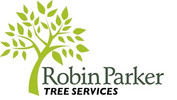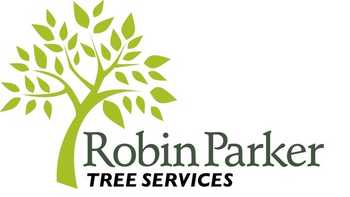Woodland Management and Small Scale Forestry
Woodland management is our specialism and we take immense pride in our ability to effectively handle these multi-disciplined projects.
It’s easy to think that our woodlands take care of themselves, but woodland management is essential its growth and survival. About three-quarters of Britain used to be woodland, but virtually all woodland today (covering about 10% of land) owes its lineage to centuries of management.
Keeping these woodlands well organised and managed is essential in maintaining the sustainability of these areas. Active and low-impact management encourages a multitude of advantages, from:
- recreational attraction
- enhanced property values
- a natural noise, visual and pollution barrier
- sustainable timber production and business opportunities
- healthy growth and biodiversity
Our woodland management covers all aspects, from surveys to dangerous trees, from hedging to timber extraction. To get a better idea of our woodland management services, click a section below for more information.
Tree Felling
Sometimes a tree needs to be completely removed, from root to crown. This can be done in several ways depending on the environment and situation, from felling in one go to (more commonly) dismantling in sections. Preparation is key to tree felling. We will plan the felling from start to finish, ensuring the right tools are used and the tree is felled safely and efficiently.
Timber Harvesting
Fruitful timber harvesting maximises financial returns with the full picture of efficient woodland management in mind. This depends on a variety of factors, both external and in the woodland in question, and we’ll be happy to coach you through the process. We will continue to closely monitor and inspect the sites in question to ensure things run smoothly.
Woodland/Forest Thinning
The jobs vary hugely depending on the long-term goal for the woodland, but in a nutshell, the aim is to reduce the woodland’s “increment” – the amount of wood the trees are producing. This could involve deadwooding, removing weak and ageing trees to make space for younger growths, removing undesired species or re-balancing the variety of trees, or removing branches and limbs to allow greater light access through a denser canopy.
Low Impact Extraction of Timber
Our low-impact approach to woodland management creates minimal damage to the woodland and surrounding areas, whilst maintaining financial viability. Lightweight, scaled-down equipment can fell and extract timber by weaving through the trees, rather than having to clear-fell large swathes just to gain access to the woodland. These specialist, compact machines allow valuable timber extraction with minimum ground disturbance and wasted materials.
Dealing With Dangerous/Windblown Trees
Identifying a dangerous tree that’s still standing can be tricky if you don’t know what to look for. Dying branches, a tilt, exposed roots, peeling bark and mushrooms growing on the trunk can be indicators that something is wrong, but don't try to tackle the tree yourself. Dealing with dangerous trees is highly hazardous and we recommend leaving it to the professionals.
We will perform a full risk assessment to determine the best course of action, utilising over eight years of knowledge, experience and tools.
However, if a tree has become “windblown” - or uprooted - and has fallen (whether due to storm damage or otherwise) we can safely dismantle and remove it.
Dangerous trees pose a lot of hazards and dealing with them before they fall, if possible, is always preferable. If you're unsure, call us for a consultation.
On-site Firewood Production
Our onsite firewood processing service makes turning trees into logs simple. We will come to the site with our machinery, process the wood and either load into a trailer for transport, or be decanted directly as required. This minimises timber waste and maximises safety, using high-quality tools and machinery to get the job done.
Hedge Laying
Hedges are a quintessential part of our countryside, performing a variety of useful functions from acting as wildlife corridors to marking boundaries. It’s actually a traditional country skill that was originally used to fence in roaming livestock. However, hedges can get overgrown, unkempt and unhealthy with jagged bases if not properly maintained. Hedge-laying is the process of making (or maintaining) a hedge by weaving partly-cut (pleached) branches through upright stakes to encourage new growth.
Estate Management
All management projects’ successes stem from a professional plan rooted in experience and expertise, from initial site visits and risk assessments to long-term management and business plans. We have the knowledge, expertise, experience and tools for all situations and long-term goals, whether we’re diving into a project headfirst or starting a new one from scratch, whether the woodland is for conservation, recreation, sport or commercial timber production.
Tree Surveys and Inspections
Click the button below for more information on our tree surveys and inspections services.
More information...
Tree Surveys and Inspections
Individual Tree Inspections
Tree inspections are important surveys carried out in public and private areas. The inspections herald a full report that can be used to decide what to do next – leave the tree be, perform some maintenance, crown thinning, pollarding, or felling as necessary. The physical dimensions, age, health, potential growth and location of the tree will all be taken into account.
These are often required when applying for planning permission to see how trees may impact a proposed development.
Woodland Surveys
Woodland surveys are critical pieces of work undertaken to paint a full picture of the woodland in question, enabling us to draw up fully informed and targeted management plans without guesswork or estimates.
Management Plans
Our management plans lay out solid, well-informed and targeted blueprints for keeping projects on track, whether the woodland in question is simply being maintained or radically changed. Having a plan keeps long-term goals in place, co-ordinates the project and ensures materials, time and resources are used to best effect.




